Expert’s Rating
Pros
- Lighter weight gaming phone
- Plenty of power
- Good battery life
- Game Space software
Cons
- Lack of features compared to similar models
- Non-tweaked processor
- No 3.5mm headphone jack
- Cooling system is a step down from Redmagic 10 Pro
Our Verdict
Taking some of the weight out of playing games is a welcome advance, but the lack of a few hardware features from the Redmagic 10 Air make this feel like something more for enthusiasts rather than hardcore gamers.
Price When Reviewed
This value will show the geolocated pricing text for product undefined
Best Pricing Today
Price When Reviewed
$549
Best Prices Today: Redmagic 10 Air
Redmagic’s gaming smartphones have regularly appeared on this site, due to the combination of 6-monthly release schedules and the power/price balance that makes them such appealing devices for mobile gamers.
One criticism that can be aimed at the lineup though is that the handsets are usually quite bulky and heavy. Redmagic has addressed that particular issue with the launch of its new 10 Air model, which promises to bring the powerhouse performance of previous iterations in a package that’s a bit more comfortable in the hand (and pocket).
But do build compromises mean it’s lightweight in more ways than one? Here’s the full Tech Advisor review.
Design & Build
- New lightweight design
- No fans
- IP54 water and dust rating
Redmagic gaming phones have stayed a pretty consistent size over the past few years, with the 163.4 x 76.1 x 8.9 mm dimensions of the Redmagic 10 Pro being typical of what you’d get. This chunky frame was also accompanied by a fair amount of weight: 229g for the 10 Pro.
To achieve the slimmer frame, Redmagic has removed one of the signature parts of the cooling system – the fans
While that did make the earlier models feel substantial, I have to admit that the slimmed down 164.3 x 76.6 x 7.85mm proportions of the 10 Air (yes, it’s marginally bigger but much thinner) and 205g weight makes it a lot more comfortable to hold for longer gaming sessions.
Martyn Casserly
To achieve the slimmer frame, Redmagic has removed one of the signature parts of the cooling system – the fans. Without those ports, the chassis is more compact and can now offer at least some protection against water and dust, with a IP54 rating (meaning it’s splash-proof but can’t be submerged).
But, as a gaming-focused device, how can the system stop the components from overheating without fans? This is where Redmagic says the liquid metal component of the ICE-X cooling system comes into play. It dissipates heat efficiently and negates the need for fans.
This is accompanied by an 6100mm2 vapour chamber, which I have to note is pretty much half the size of that found in the 10 Pro. My initial thoughts were that this device would heat up quite quickly without the ability to expel the air via the fans, but I’ll explore this more fully in the performance section of this review.
Controls have also been adjusted (presumably due to the absence of the fan ports), with the 520Hz touch-sensitive shoulder triggers still found on the right flank, along with the volume controls and power button. The red switch that has been a staple of Redmagic’s design for years is now a button and has moved to the left flank. It still opens up the Game Space software suite, and can be assigned other functions, so you don’t lose anything from the relocation.
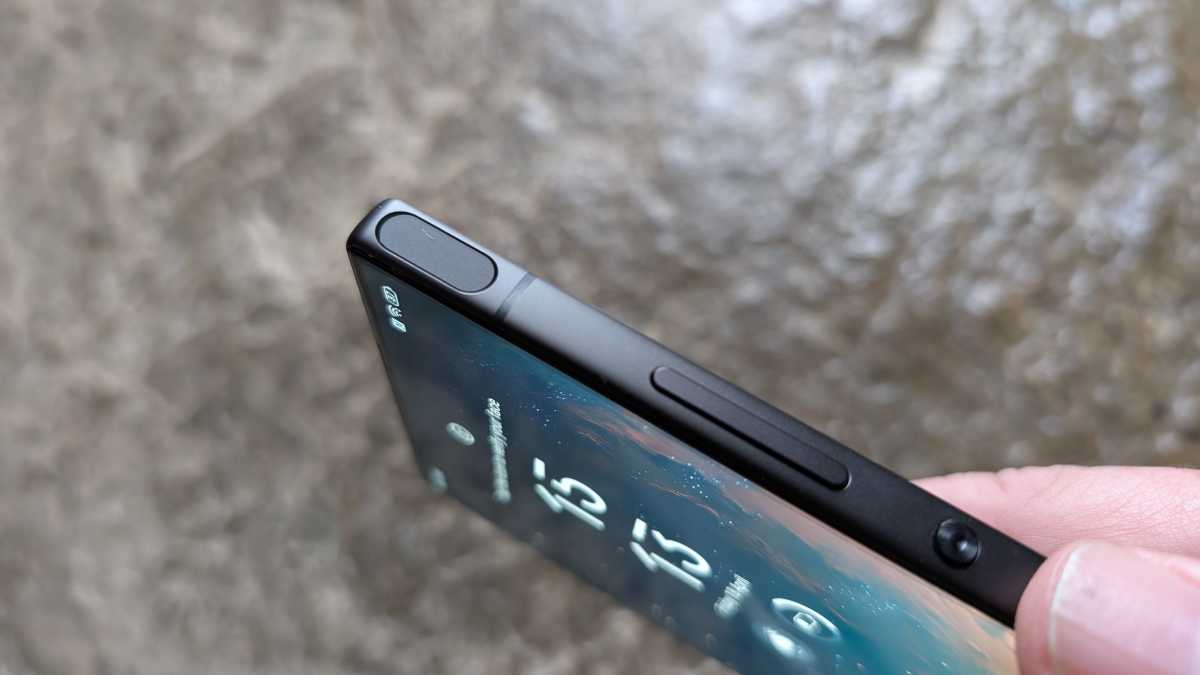
Martyn Casserly
Sadly, the 3.5mm headphone jack has gone, which will be a blow if you like to use wired headphones while gaming. A USB-C to 3.5mm jack dongle might be the answer, or you could switch to wireless and connect through the Bluetooth 5.4 capabilities.
The rear panel has also changed, no doubt in an effort to slim down the device. Gone is the glass panel that removed the camera bump. Instead there’s a matt metal panel and the three circular protrusions for the dual cameras and flash module sit up from the surface. It’s not as neat or premium as the 10 Pro, but it’s pretty standard for most mid-range Android devices.
The metal back also means there’s less room for the RGB lighting features from previous models. You still get a lighting ring in the flash module that can display a range of colours, but the logo doesn’t house lights any longer and neither do the shoulder triggers.
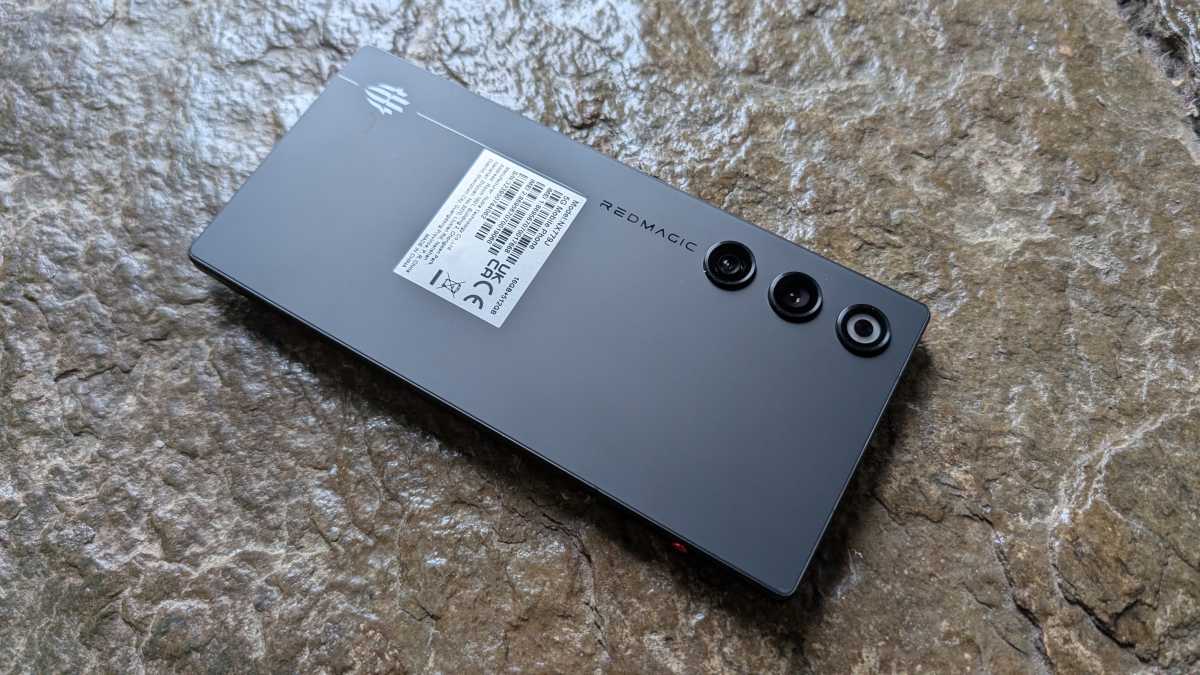
Martyn Casserly
As with previous models, Redmagic includes a plastic case, although it doesn’t offer much in the way of protection and due to the smooth edges actually makes the 10 Air less easy to hold. It’s probably best to try and pick up a third party one instead, as frantic gaming sessions could easily end up with the device slipping out of your hands.
At launch, the Redmagic 10 Air comes in Twilight (Black) or Hailstone (White) with the rather fetching Flare (Orange burst) following on later.
Screen & Speakers
- 6.8in AMOLED display with 1.5K resolution
- 120Hz
- Stereo speakers
Visually, the Redmagic 10 Air bears more than a passing resemblance to its forebears. You get a nice 6.8-inch AMOLED panel that runs at 1.5K resolution (2,480 x 1,116) and boasts an impressive 93.7% screen to body ratio. All of this is uninterrupted by pinholes or notches, as the 10 Air also features an under-display fingerprint reader as well as a camera that’s hidden in a similar way.
The 10 Air always felt rapid and accurate in regard to controls, even during busy sections of games
This makes for a great gaming experience, as well as when watching movies or other video content, with nothing obscuring the action. The fingerprint sensor proved to be pretty reliable during my time with the 10 Air, which has also been the case with the previous models in the range.
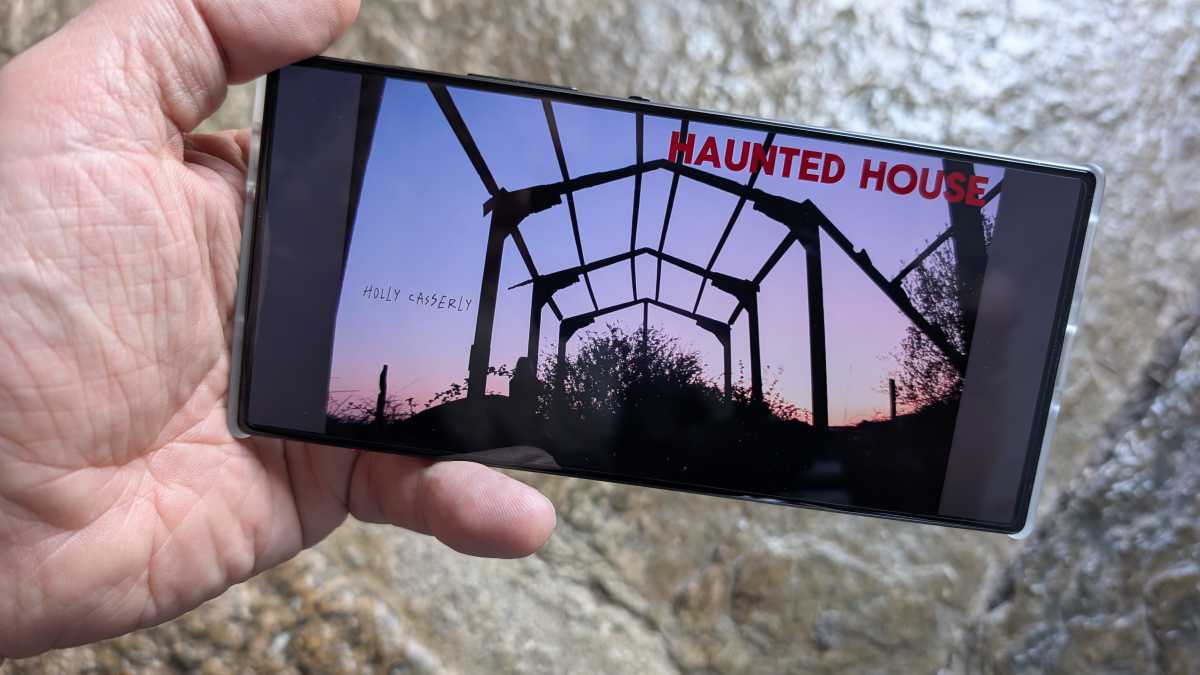
Martyn Casserly
There have been a few compromises when compared to the 10 Pro. Brightness is stated at a maximum of 1,600 nits, rather than the 2,000 offered on its bigger brother. The refresh rate is also 120Hz, whereas the 10 Pro tops out at 144Hz. It’s still a very smooth and crisp panel though, and I didn’t notice a lot of difference between the two when used in real life.
Touch responses are also slower, with the 2,000Hz instant touch sampling rate not quite matching the 2,500Hz of the Pro, but 960Hz overall touch sample rates are the same. In all honesty, the 10 Air always felt rapid and accurate in regard to controls, even during busy sections of games.
Audio comes from the stereo speakers positioned at either end of the device. Unlike previous models, the left speaker is the one used for phone calls as opposed to a dedicated one placed on the shorter edge.
It doesn’t seem to affect the quality, as the 10 Air kicks out plenty of volume and with a frequency spread that’s all you could really hope for from a mid-range phone. It can get a little toppy at times, but there’s still a decent amount of beef there in the mid-range and bass, so things don’t sound shrill.
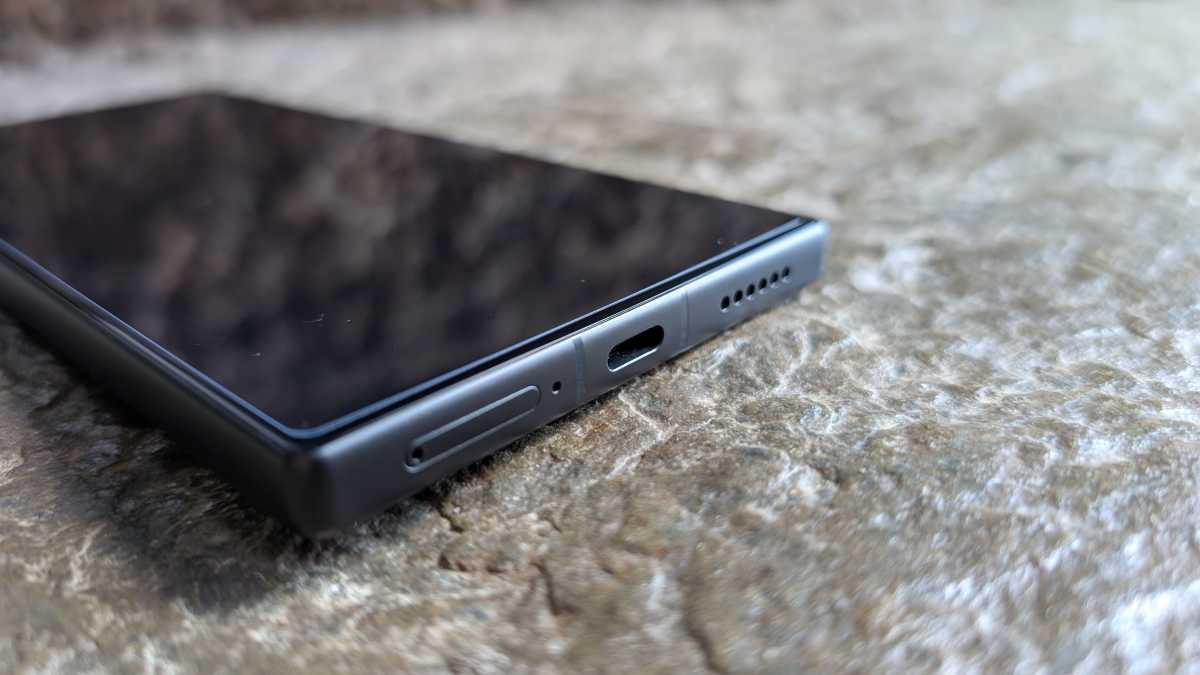
Martyn Casserly
The 10 Air does come with DTS-X Ultra certification and supports Qualcomm Snapdragon Sound, so pairing it with some good headphones should deliver impressive sonic results. As mentioned earlier, you’ll either need a USB-C to 3.5mm converter or settle for wireless connection through the Bluetooth 5.4 capabilities on board, as the physical port has been left off this particular model.
Specs & Performance
- 3.3Ghz Snapdragon 8 Gen 3
- Dedicated RedCore R3 gaming chip
- LPDDR5X and UFS 4.0
Another indicator that this is a budget version of the Pro model is in the silicon. Don’t get me wrong, the 3.3Ghz Snapdragon 8 Gen 3 is a fast processor, especially as it’s still aided by the RedCore R3 gaming chip from the last iteration.
But, the Pro model came equipped with the Elite version, and previous models have featured the Leading Edge variants, which were basically overclocked versions that had more power under the bonnet. You still get the LPDDR5X memory speeds though, as well as UFS 4.0 storage.
With the processor caveat in place, the performance of the 10 Air was good. Games loaded quickly and ran without noticeable slowdowns or crashes. Using the standard suite of games I throw at devices like this, I found the experience responsive and reliable. Asphalt Legends whisked along at a frenetic pace, with the device just getting out of the way and letting me play.
The cooling system does manage the heat efficiently, although I think regular breaks would keep things at manageable temperatures
I did experience some weirdness with the ads you have to watch to boost your in-game currency. On a couple of occasions they finished but the game didn’t revert back, causing me to have to close the app and reboot it in the end.
It’s hard to know whether this is an issue with the current version of the game (I haven’t seen this before) or the Redmagic software. Once the app was restarted, everything was fine again, so maybe it’s just a glitch that will be gone when the next update arrives.
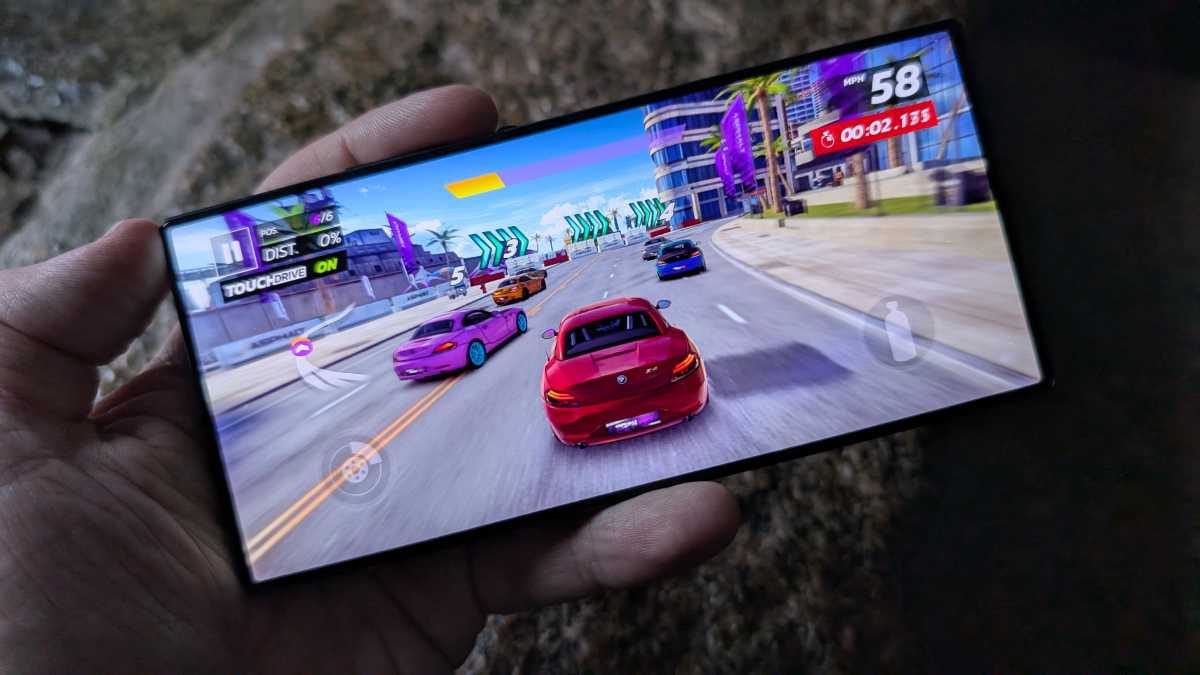
Martyn Casserly
For more challenging duties, I fired up the graphically demanding Genshin Impact. Again, the 10 Air proved more than capable of reacting to the game without losing any steps. Prolonged playing of any high-level game does heat up the 10 Air quite quickly. A 40-minute session with Asphalt Legends did start to make the chassis a tad warm, although not burning hot, but longer sessions could result in temperatures that would start to become concerning.
Stopping for a few minutes did see the heat dissipate, so the cooling system does manage the heat efficiently, although I think regular breaks would keep things at manageable temperatures.
The lack of fans does seem to make the cooling system slower and less powerful than on the 10 Pro and previous models, which makes me think that the Air is more of a serious casual gamer device rather than hardcore gamer.

Martyn Casserly
As is standard with reviews here on Tech Advisor, I ran the Redmagic 10 Air through our barrage of bench tests, from which it returned the following scores:
Cameras
- 24mm 50Mp main camera
- 14mm 50Mp wide camera
- 16Mp under-display selfie camera
The camera array is the same as found on the Redmagic 10 Pro, albeit with the 2Mp Macro module removed, but there won’t be much crying in the streets lamenting its loss.
As with its predecessor, the 10 Air is a solid mid-range performer, with the lenses able to capture perfectly usable images and video. I didn’t notice that much difference in colour and sharpness between the Wide and Ultrawide cameras, so you can shoot as the space around you demands. Too close to get everything in? Switch to the ultrawide for a bit more coverage, otherwise you’re good to stay on the wide lens.

Martyn Casserly
Skin tones can be a little soft at times, with the software also sometimes washing out images if light sources are on the complicated side, but for everyday snaps it can certainly do the business. Portraits offer subtle (but natural) looking bokeh, and night shots are good if you’ve got a steady hand.
As usual, you have to turn off the watermark option that Redmagic infuriatingly sets as on by default. Plus, you’ll probably want to take the Beauty setting off the portrait mode, as it just smooths things out in a way that isn’t great.
I took the 10 Air for a day out in London, visiting a few different settings, and came back with plenty of usable images. It’s also notable that employing simple edits on Google Photos turned some of the pictures into cool, moody ones that I’d be very happy to share on Instagram or other social media feeds.
Redmagic includes plenty of camera modes that you can play with, including Star Trails for night photography, time-lapse, slow motion, multi-exposure and other fun options that you can use to create interesting images. There’s also a Pro mode if you want complete manual control over all your settings.
The front facing camera is an under-display variant, as with previous Redmagic smartphones. And, in keeping with tradition, it’s not great. But whereas on previous iterations the Images were washed out and fuzzy, there seems to be something going on with the software in the 10 Air. Now, faces are sharpened and look more detailed, albeit with strange blotches of colours that aren’t present in real life.
For instance, the software had a tendency to group some of my freckles together into dark areas of skin, while a slight redness on my lip due to a cut from a few weeks ago was brought up to look much more prominent than in reality. It shows promise, so with some more tweaks maybe a usable under-display camera isn’t too far off.
Video is solid too, with the 4K 60fps aided by OIS to keep things stable. Frame-drops didn’t appear to be an issue and the balance when moving from light to dark areas was well judged by the software. Obviously, if the light starts to fade then you’re going to get some noise and the focus can start to struggle.
Here’s some images I managed to capture on the Redmagic 10 Air:
Battery Life & Charging
- 6,000mAh battery
- 80W wired fast charging
- No wireless charging
If you want to play long gaming sessions on your phone, you need to know that the battery is going to last. So it’s good news that the Redmagic 10 Air comes with a sizeable 6,000mAh cell inside. Yes, that’s not as large as the 7,050mAh one in the 10 Pro, but then the Air doesn’t have to drive those fans.
In our standard PCMark battery bench test, the 10 Air put up 10 hours and 8 minutes, which is decent but hardly class-leading. It’s in line with previous Redmagic offerings though, as the 6,500mAh equipped 9S Pro scored 10 hours and 50 minutes and the 9 Pro clocked up 10 hours and 23 minutes with the same battery. Sadly, we couldn’t test the 10 Pro, as the pre-production software didn’t support the PCMark 3.0 benchmark app at the time.
Judging by the battery depletions during various gaming tests I ran, you’re probably looking at between 5 and 6 hours of play before you’ll need to recharge, depending on the game you’re playing, brightness settings, Bluetooth connections and other factors. If, for some reason, you’re just using the 10 Air as a regular phone, then you can probably eke out a day and half of normal duties before needing to find a power source.
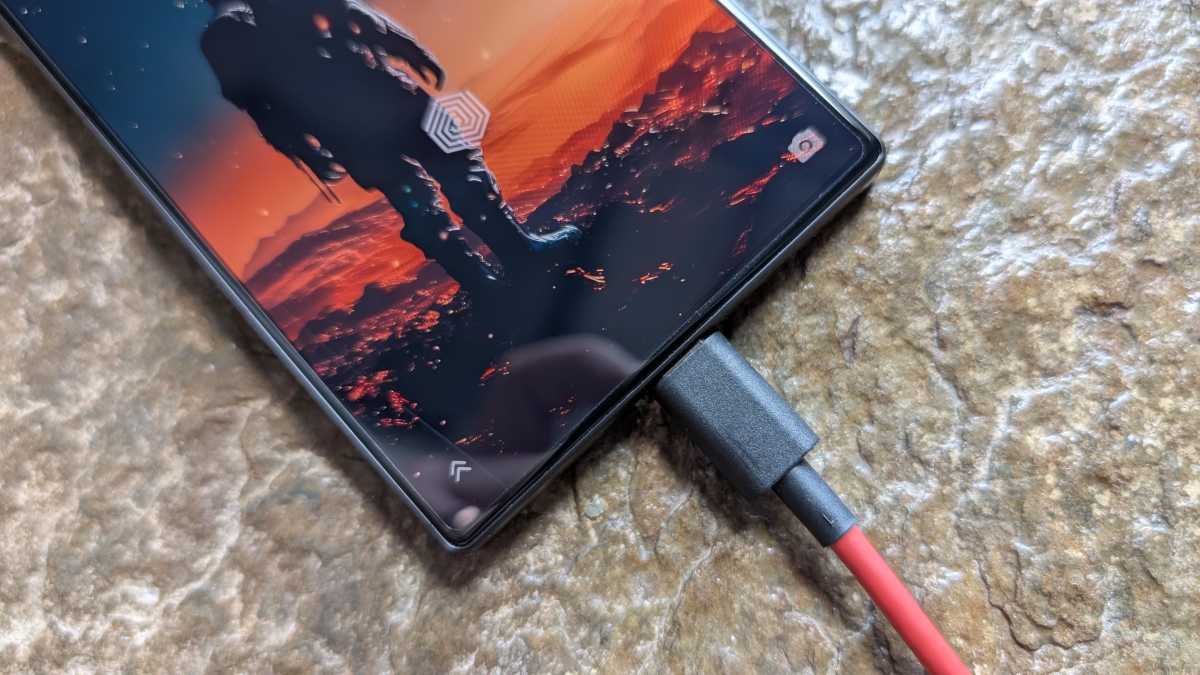
Martyn Casserly
Thankfully, recharging is a lot more impressive, with the 80W fast charge capabilities meaning that the 10 Air went from zero to 100% in just a hair over 42 minutes with the included charger.
Sadly, there’s no wireless charging available for the 10 Air, but this is consistent with previous models from the brand.
Software & Apps
- Android 15
- Redmagic 10 UI
- Security updates until 2028
Redmagic supplies the 10 Air with Android 15, overlaid with its Redmagic 10 UI – the same as on the 10 Pro. Everything runs smoothly, with the UI offering plenty of features that allow you to tailor the device to your personal tastes. These include icon packs, loads of wallpapers, various themes, plus the ability to change the colour of the notification light on the back.
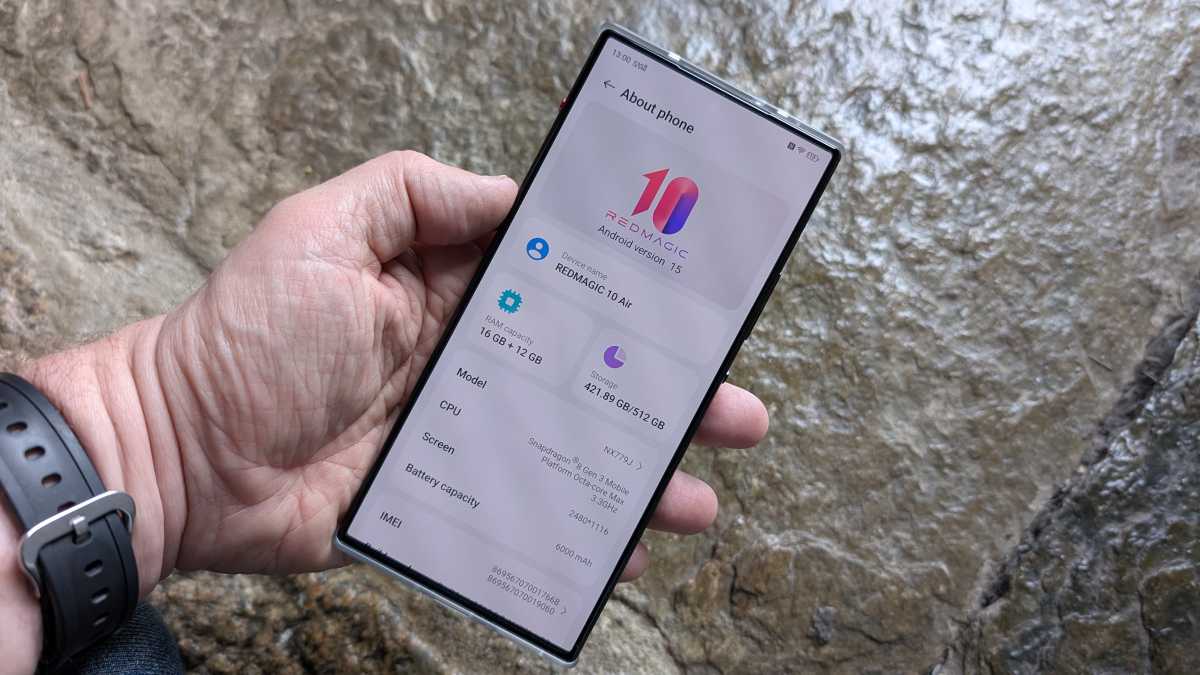
Martyn Casserly
As any fan of Redmagic knows, the dedicated Game Space software is one of the standout features of the series. This is accessible via either the physical red button or by swiping in from both sides of the device when in landscape mode.
Once opened, you can manage your game library, tweak the settings, enable and define the shoulder trigger buttons, plus access various in-game features such as magnified sniper views, higher contrast graphics to identify opponents more easily, and a wealth of plug-ins to level up both the appearance and performance of games.
For those who take mobile gaming seriously, Game Space has a fantastic array of tools to get the most out of the experience.
Redmagic has confirmed that the 10 Air will receive three Android version updates, as well as three years of security updates support. While this isn’t anywhere near the length you’ll get from Google, Samsung or other major players, it is an improvement over the company’s recent offers. Bear in mind that after those three years of updates, the 10 Air won’t be safe to use online.
Price & Availability
Redmagic launched the 10 Air on 23 April 2025, with the following configurations available from the Redmagic UK and Redmagic US sites
- Redmagic 10 Air 12GB/256GB (Twilight & Hailstone) – $549 / £439 / €499
- Redmagic 10 Air 16GB/512GB (Twilight & Hailstone) – $699 / £559 / €649
- Redmagic 10 Air 16GB/512GB (Flare) – $699 / £559 / €649
These tiers means that the 10 Air is around £140 cheaper in the UK than the 10 Pro, while US customers are looking at around $100 difference between the models.
If you want the ultimate gaming phone, you’ll be looking towards that excellent ROG Phone 9 Pro, but that will set you back over £1000/$1000, which is considerably more than the 10 Air. Our advice is to look for the Redmagic 9S Pro or Redmagic 9 Pro second-hand or on offer, as they deliver similar or better performance at prices that should be around that of the 10 Air. Of course, they’ll be bigger and heavier though, so that’s worth bearing in mind.
Alternatively, you can look at our selection of the best mid-range phones currently available to see what the non-dedicated gaming devices have to offer.
Should you buy the Redmagic 10 Air?
The Redmagic 10 Air is a curious beast. For a little less money, you lose out on quite a few features from its heftier siblings. The 10 Pro (and previous models) have 3.5mm headphone jacks, cooling fans, tweaked versions of the processors, more RGB lights, a macro camera (although this isn’t a great loss), and longer battery life.
That being said, the 10 Air is a nicer phone to use in the hand, thanks to its slimmer and lighter build. The addition of splash protection is a welcome one, and the front facing camera shows promise of actually being usable if the software continues to be tweaked. The less effective cooling system does suggest that this is aimed at gamers that aren’t quite in the hardcore camp, but rather found in the enthusiasts camp. That’s no bad thing, as the full blown Redmagic phones could be overkill for some players.
If you want a gaming focussed smartphone, but would rather avoid the heft of the usual candidates, the Redmagic 10 Air could be the right mixture of power, price and ergonomics if your demands aren’t too high.
Specs
- Android 15
- Redmagic 10 UI
- 6.8in AMOLED display with 1.5K resolution, 120Hz
- 3.3Ghz Snapdragon 8 Gen 3
- Dedicated RedCore R3 gaming chip
- 12GB or 16GB LPDDR5X
- 256GB or 512GB UFS 4.0
- 24mm 50Mp main camera
- 14mm 50Mp wide camera
- 16Mp under-display selfie camera
- Stereo speakers
- 520Hz Touch-sensitive shoulder triggers
- Under-display fingerprint sensor
- Wi-Fi 7
- Bluetooth 5.4
- Dual SIM (Nano)
- ICE-X cooling system
- IP54 rating
- 6,000mAh battery
- 80W wired fast charging
- USB-C
- 164.3 x 76.6 x 7.85mm
- 205g
































